#Flowers -- United States Flowers in Literature
Video
n294_w1150 by Biodiversity Heritage Library
Via Flickr:
American wild flowers in their native haunts. G.S. Appleton. biodiversitylibrary.org/page/39030346
#Flowers -- United States Flowers in Literature#United States Geological Survey#bhl:page=39030346#dc:identifier=http://biodiversitylibrary.org/page/39030346#flickr#botanical illustration#scientific illustration#wood lily#lily#lilium philadelphicum#Philadelphia lily#prairie lily#western red lily#cottagecore#flowercore
0 notes
Text
✦ another (even wilder) theory with bagel
similar to my teruko theory, this one also has a lot of room for rebuttal.
to be honest, a lot of the evidence i have for this is quite flimsy (_ _;)
this theory is mainly about mai akasaki’s connection to the cast, and how it relates to the killing game in general.
take this with a grain of salt as always
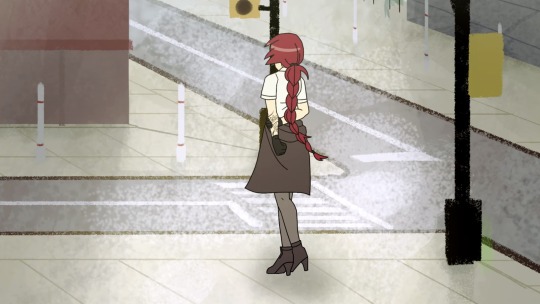
//spoilers for up to chapter 2 part 1 of drdt
//additional spoilers for bonus content, such as the bonus episodes and the new “literature girl insane” MV
there shouldn’t be any tally5 spoilers if i’m not wrong ( ・∇・)
here’s one question i have for you all: how many members in the cast, right now, actually know mai akasaki?
it’s definitely implied in the bonus episodes and the quotes on her character page that she’s connected with everyone in the current cast, but there was a paradox i noticed—if it even is one, that is (-.-;)—that led me to think that this question…may actually be a lot more complicated than it seems.
let’s bring up the bonus episodes first.
min’s bonus episode is definitely during their time at hope’s peak. they’re literally at the school, studying about it, discussing min’s “role” as an ultimate compared to the other students, etc. basically, many details point to min and “unnamed classmate” (who is presumably mai, based on the flowers in the dialogue box of the bonus episodes matching up with those on mai’s tattoo) being students of hope’s peak academy in the united states.
though there’s no physical evidence or exact basis for this, i would personally like to think that xander’s bonus episode is placed during spring break at the academy. he is talking to his “classmate,” after all—and in that case, it would also chronologically line up with min’s (whose bonus episode takes place a week before spring break).
presumably, the other bonus episodes will follow a similar pattern, and we will see mai/UC talking to other members of the DRDT cast to get to know them more. i will assume this means that the whole cast, not just min and xander, have been to hope’s peak before—and attended class as students there. after all, it would be the only way the bonus episodes would make sense.
however, the dialogue from the first few episodes of the series suggests something else.



as implied from the dialogue, all of the students believe they are only entering the entrance ceremony of hope’s peak as freshmen, and had no previous affiliation with the school. including xander.
obviously, this means that at the very least, their memories have been tampered with to remove anything regarding their experience at hope’s peak academy.
—
sorry, very quick side tangent (*'▽'*)
going by this theory, if the drdt cast genuinely went to hope’s peak, it’s very likely that they had to do a bunch of paperwork and submit a lot of information for their enrollment—which probably includes medical information and any accommodations that were necessary for their well-being. additionally, if we assume that the cast attended hope’s peak for a year or a few years, it’s likely that whoever the mastermind is, they had the time to know the rest of their classmates well enough to be able to identify their preferences
either way, this would actually be a pretty strong explanation as to why many components of their environment seem to be extremely fine-tuned to their preferences and necessities, despite no recollection of sharing that information with anyone involved in the killing game.
though i bet this was already obvious, i felt like it was something i probably should bring up.
—
in that case, however—how would it affect their memories with mai?
as i can’t exactly speculate for the other students, i’m going to trace back to what i know. at the very least, it seems to be implied that min only met mai after being admitted into hope’s peak academy. min essentially drove her entire life around schoolwork, and studying for the “ultimate contest for eminent students,” the test that allowed min to receive her title—it’s likely that before then, she never surrounded herself with friends nor had any time for herself to explore her own hobbies. which probably means that she wasn’t acquainted with mai before enrolling into hope’s peak.


her backstory is really sad, by the way. i really wish she lived longer ( ´△`)
as for when it comes to the other characters, i would like to remind you that hope’s peak scouts across the country for their students—so it’s more logical to assume that many of them resided in hometowns that were very far away from each other. so unless mai’s talent was the ultimate traveler or something, i think it would be very improbable for her to know everyone in the cast before their admittance into hope’s peak.
taking this into account, and assuming that the cast’s memories of hope’s peak were completely erased, there’s a possibility that the cast doesn’t remember mai akasaki, despite her connections with them. the only exception would be teruko, who clearly remembers mai—and seems to have been helped by her when enrolling into the academy in the first place, pointed out by this theory here by @laly-481.
…or at least, that’s what i thought at first—until someone decided to kick in the door while holding a new music video.
i guess in that case, the biggest question i should answer is this—why does david remember mai?
getting into very, very wild theory territory here. take what i’m about to say with a grain of salt
assuming that the music video is really a reflection of david’s worldview and thought process, please ignore the fact that i’m acting like the antithesis of occam’s razor right now, then there’s no reason for mai akasaki to be featured in the video—much less have a photo of her placed in a wooden frame—if he didn’t remember her.
yet, there she is, on the right:

she even has a little description about how she was “someone dearly loved,” which fits perfectly with her character and the secret quotes on her profile page.
this is indicative of the fact that david remembers mai—and knows her well enough to even make an accurate statement about her. but, how?
obviously there’s the simpler explanation of “david knew mai before they went to hope’s peak,” which is of course a totally valid explanation—however, some details about the new music video made me consider a possible, different theory.
a grain of salt? more like, a mountain of salt from here on out
when i was watching the “literature girl insane” music video earlier, i noticed something interesting about this frame:

here, xander doesn’t have his eyepatch. though i’m not throwing away the possibility that this was just a technical error on the artist’s side—personally, this could be a indication that david knew xander before the killing game.
seeing as all of the cast are connected by the unnamed “classmate,” after all, it’s a likely possibility that the current participants of the killing game were originally in the same class at hope’s peak academy. which means, they all probably knew each other before this whole killing game went down.
in an earlier theory, i talked about how xander may have been the person in the opening prologue cutscene, and how he probably had his eye injured at that time. given that the person speaking during that scene is aware of the killing game (and is expressing their desire to end it), this event likely happened right before the killing game started—otherwise, it would be pretty imprudent for the mastermind to announce it and then wait for an entire month to set up everything, then make everyone fall unconscious, then remove their memories, etc.
what i’m trying to get here is that the cast, had they still retained their memories from hope’s peak, would definitely remember xander with both eyes. however, we know this to not be the case—from his introduction, we all see that xander had already lost his right eye from the beginning of the killing game.
therefore, for david to remember xander from before he got his eye injury, he must’ve had at least some partial memory of hope’s peak—otherwise, it would be highly unlikely.
this would give a possible explanation as to why the frame of xander without his eyepatch appears in the “literature girl insane” music video.
and maybe give a possible explanation as to why david cared about xander despite only knowing him for ~three days. and defended him passionately during the first trial even after a lot of evidence pointed to him attacking teruko.
this also would explain why david remembers mai—assuming they were in the same class, since mai likely had incredibly close connections with the cast (including david), it’s more than likely that david cared about mai and possibly (vaguely) remembered her even after having his memories tampered with.
well, the “no-eyepatch” deduction completely hinges on the assumption that xander didn’t like, take off his eyepatch in front of david like he did with teruko, so i may be completely wrong about this. however, it is interesting that such a small detail was included in the mv.
so is this one:

i don’t know how it is for you guys, but that fork seems suspiciously similar to the fork in the prologue (which i theorized to be the item that caused the injury to xander’s right eye). additionally, the fork literally stabbing the “face” of the clock is… quite symbolic. it may be just me. i’m not sure. (-_-;)
though, it could suggest that david remembers that scene—and perhaps knows about the “possible escape” of killing teruko? i highly doubt he was the one who wrote the note (rather i think that was xander himself), but it may account for that 2nd vote for teruko in the first trial.
my personal (unhinged) theory (with really no way to back it up) is that david may have retained partial memories of his experience at hope’s peak—but probably only a little, definitely not all of them. this may explain why he remembers mai and seems to recall xander before his eye injury (despite xander seemingly not remembering that they’ve met before)—but hasn’t called out the true mastermind nor seems to remember an escape yet.
also, though his current behavior in the 2nd trial may imply that he’s trying to end the killing game early via wrong vote, i personally think he’s just breaking down and acting suicidal without that objective in mind, based on his actions.
little side note at the end: it would be absolutely amazing (and ironic) if the two people with the most distant character relationships with the rest of the cast (as of now) happened to remember the single person that had the closest relationships to all of them.
minor clarification/add-on: i just realized that i never said this, really sorry about that. m(_ _)m but basically, i don’t think david has any sort of clear memories regarding xander and mai at hope’s peak—rather, when i say “partial memories” i meant more along the lines of “vague nostalgia you can’t quite place.” he might somewhat recognize their faces at most, but likely not any clear sequences of events.
and honestly, what i wanted to talk about more in regards to this theory is more about the fact that only teruko (and maybe david) remember mai in the first place—the rest of the cast probably can’t, with the way their memories were wiped.
uh, this was quite the ride. i truly felt like the antithesis of occam’s razor as i was writing this
however—this theory likely has a lot of points that can be argued against, as well as many other possibilities i didn’t consider. please, don’t be afraid to drop them in your reblogs or comments, i would love to read them!
and as always, take this with a (larger than usual) grain of salt
#bagel’s train of thought#drdt#danganronpa despair time#despair time#mai akasaki#david chiem#xander matthews#fangan#fanganronpa#welcome to “i make random connections and lots of assumptions hourly”#this was definitely fun to make though#i’m probably wildly wrong about all of this#…why is this 1.7k words ( ̄  ̄)#sorry about that last part by the way. it’s incredibly disorganized#min jeung#(kinda)#(i talked about her a little)
98 notes
·
View notes
Text
Poked around and looked into the symbolism of different plants mentioned in protocol 3 (taking root).
(cut because it's a bit long)
Jasmine:
- various associations in different cultures.
- united states: primarily associated with romance and beauty. Only a limited link to this case (the love - however controlling - Dr Webber feels for Maddie).
- Italy (14c): white jasmine is associated with purity and innocence, featuring heavily in art of the virgin mary. No strong connection to this case.
- Thailand: associated with motherhood, respect and love. No strong connection to case.
- Philippines: symbolises luck and power. Potential link to case (specifically ‘power’ part of symbology).
- jasmine is associated with the Hindu deity Shitala, who protects against disease. This is interesting as it could be ironic symbolism in the case.
Generally, it appears to be associated with love, or beauty, which isn't particularly relevant to the case. However, *blue* jasmine is associated with calmness and tranquility, which could link to Dr Webber's increasingly serene state throughout the journal entry.
- from a more literal outlook, jasmine is a climbing plant. From this, it could be associated with "choking things out", which could mirror the way Webber's awareness and panic is gradually ground down throughout the ‘night’. Additionally, due to it's sweetness and headiness, the scent of jasmine (which is referred to several times) could be interpreted as overwhelming or dizzying, and could be tangentially linked to Webber's faltering grip on reality (not the best phrase, but unsure of how else to describe it).
Aniseed:
- primarily, anise flowers appear to be associated with wisdom and clarity of thought. Again, this is ironic to the nature of Dr Webber's experiences.
- similarly to jasmine, aniseed is considered to be calming.
- interestingly, it is more often used to represent relationships and close bonds in literature, which does highlight Webber's complicated and ultimately doomed relationship with Maddie.
- in some spirituality, wilted or dying anise (flowers, specifically) is said to reflect poor wellbeing or health - this seems fairly in tune with the other themes in the case.
Birch:
Note: considering the line "my skin is pulling away nicely, like blanched tomatoes", it seems likely that it could be paper birch, specifically.
- although birch does have some more...generic associations (healing, protection, good fortune), the parts that seem most relevant to the case are new beginnings and regeneration.
- what interests us is that typically, yew trees are found in churchyards (UK). They were traditionally planted because yew was associated with protection and regeneration (and were believed to help protect the buried dead) - very similar characteristics to birch. The main difference (as far as we are aware) is that yew is also associated with longevity, while birch is not (birch have a relatively short lifespan, for a tree). From a diagetic point of view, this could portend doom for Webber (all things considered from the end of the case, and the fact that the journal was "found within a water damaged black briefcase, partially buried, penetrated by mouldy roots" - albeit with no body - he probably did meet a grisly end)
...On a bit more of a tangent to this, yew trees are so incredibly poisonous. Every single part of the tree is toxic, except the red aril (berry flesh surrounding the seeds). You often find that large yew trees are surrounded by bare earth rather than grass and herbaceous plants because the dropping needles sterilise the soil. This is interesting in the context of the episode because that aspect would be very in tune with the Corruption in Archives. Something beautiful and growing and ultimately deadly, gradually leaching into its surroundings, poisoning and killing everything it touches...but this isn't Archives. Who knows! Maybe that's why birch features instead. I just. Why no yew tree? Why? We just want to know :(
#tmagp#the magnus protocol#tmagp 3#we will not apologise for the infodumping at the end :)#research by 🟢#additions by 🟣#rambles
25 notes
·
View notes
Text
THIS DAY IN GAY HISTORY
based on: The White Crane Institute's 'Gay Wisdom', Gay Birthdays, Gay For Today, Famous GLBT, glbt-Gay Encylopedia, Today in Gay History, Wikipedia, and more … April 9



1476 – Italy: Leonardo Da Vinci and three other young men are accused of sodomy anonymously, but subsequently acquitted.


1821 – The French poet Charles Baudelaire (d.1867), a central figure in nineteenth-century French literature, was born on in Paris (d.1867). Two collections of Baudelaire's poetry continue to intrigue and influence writers: Les fleurs du mal (Flowers Of Evil, 1857) and Le spleen de Paris (Paris Spleen, 1869). In the latter collection, published posthumously, he essentially invented the "prose poem." For a while lived the modish life of a literary dandy on an inheritance from his father, reluctantly joining the Paris boheme when his fortune ran dry.
Speculation continues about his personal life. Some early writers suggested that he died a virgin; many others now believe that he died of syphilis acquired in 1841. He had complicated relations with Jeanne Duvall, a prostitute; Madame Sabatier, a courtesan for the wealthy and socially prominent; and Marie Daubrun, an actress. The poems Duvall inspired portray her as both the apex of beauty and the nadir of evil.
Lesbianism fascinated Baudelaire. He even considered naming his first book of poems Les lesbiennes. "Lesbos," from Les fleurs du mal, celebrates lesbian love and evokes Sappho, who is described as both "mannish" and "beautiful." Further, the speaker challenges the authorities who would "dare" judge those who inhabit Lesbos. Even the gods would not dare to judge these women, he asserts.
Two other poems called "Femmes damnées" also explore lesbianism. Here the lovers, with their disordered souls, must suffer in a world wound tight with rules. The bourgeois considers such women demonic; that alone makes them fascinating to Baudelaire.
Male homosexuality does not receive this kind of direct treatment; gay men can find no equivalent "Lesbos" in his work.
He was probably homosexual himself, or at least Marcel Proust thought so, as did Andre Gide, Roger Peyrefitte, and many others. The floppy cravat that Baudelaire affected became all the rage of European dandies and homosexuals during the first decades of the 20th century, gays having adopted him as their very own at an early date.


1909 – the Australian dancer, actor, director and choreographer Sir Robert Helpmann CBE was born on this date (d.1986). Born Robert Murray Helpman, he added the extra 'n' to avoid his name having 13 letters, at the suggestion of the dance diva Anna Pavlova, who was a devotee of numerology.
He was born in Mount Gambier and also boarded at Prince Alfred College in Adelaide, South Australia. The Helpmann Academy in South Australia, a partnership of the major visual and performing arts education and training institutions in South Australia offering award courses for people seeking professional careers in the arts, was named in his honor.
in 1932 he went to London. He joined the Sadler's Wells, later the Royal Ballet and was a principal dancer from 1933 to 1950. He established a great partnership with Margot Fonteyn, and together with choreographer Frederick Ashton, created many great roles, whilst also occasionally undertaking straight acting roles. Helpmann and Fonteyn toured the United States as principal dancers with the Royal Ballet in 1949 and caused a sensation, making stars of them all.
In 1938, Helpmann met a young Oxford undergraduate while fulfilling an invitation to dance at the university. Immediately drawn to the handsome and intelligent Michael Benthall, the pair formed a relationship that was to last for 36 years until the English theatre director Benthall's untimely death in 1974. The couple lived and often worked together quite openly for the time.
In 1965 Helpmann returned to Australia to become co-director of the Australian Ballet. Since he was Gay and flamboyant, his arrival in what was at that time a very conservative country caused some consternation. Australians were proud of his international fame, but not sure what to make of him personally. His most significant contribution to the development of theatre in Australia was his time with the Australian Ballet. The avant-garde nature and sexual overtones of much of his work unsettled many Australians. He did not endear himself with the comment:
"I don't despair about the cultural scene in Australia because there isn't one here to despair about."
Helpmann's obituaries in the Australian media were suitably laudatory, but also reserved. The country paid him the highest final recognition it could by honouring him with a state funeral in Sydney, the eulogy calling him "a genius, an outstanding communicator of unique inspiration and insight. He asserted his rights to pursue a path that improved the quality of life of the nation, and defeated the common herd of detractors." An obituary in The Times in London, characterised his appearance as "strange, haunting and rather frightening", and portrayed him as "a homosexual of the proselytizing kind" whose impact upon a company was "dangerous as well as stimulating", creating fresh headlines in Australia.


1929 – The Utah Supreme Court, although upholding the constitutionality of the 1925 sterilization law, rules that a prisoner caught in the act of consensual sodomy with another prisoner, and who is described as "acting lovingly toward other boys in the prison," can not be sterilized for that reason alone.


1948 – Bernard-Marie Koltès was a French playwright and director (d.1989).
Born to a middle-class family in Metz, his life was violent and anchored in revolt. He took off from home at 20 for a nomadic writing life that began with a stay in New York in 1968. For a social rebel seeking an uninhibited gay experience, the timing was perfect. He returned to New York frequently until his death in 1989. He he had tried his hand at writing as a youth but renounced it, and didn't take to the stage until the age of twenty. He first garnered recognition for his work on a production of Medea (Médée) in 1970.
After seeing the film actress Maria Casarès, he was inspired and resumed writing, completing around ten plays in his lifetime. His first piece, the long monologue, The Night Just Before The Forests, was staged in 1977 at the Avignon Festival, and subsequent productions were put on in collaboration with director Patrice Chéreau.
Koltès's work, based in real-life problems, expresses the tragedy of being alone and of death. Koltes is most famous for The Night Just Before the Forests (La Nuit juste avant les Forêts, 1976), r (1977) and In the Solitude of Cotton Fields (Dans la Solitude des Champs de Coton, 1986). Many of these plays were first directed by Patrice Chereau when he was artistic director of the Théâtre des Amandiers in Nanterre. Koltes also translated into French Shakespeare's The Winter's Tale.
Genet and the absurdists influenced Koltès's writing. Like other absurdist writers, he felt exiled - in his case, as a homosexual in a heterosexual world. In Africa, he saw native cultures being wiped out by European influences. This theme brought forth Black Battles with Dogs. After a visit to America he wrote Quay West (1985), about a brother and sister in a foreign culture. The title and the opening dialogue of that play, about tempting, dangerous life in moldy warehouses on a river, recall the West Street piers of the meatpacking district, and their vast, collapsing sheds that for two decades were sex resorts for venturesome gay men.
The psychopathic killer Roberto Succo provided the inspiration for his final play Roberto Zucco. It was first performed posthumously in Berlin in 1990, directed by Peter Stein. It has since been performed across Europe and the United States.
Although he did not attempt to deny it, Kolteès only ever referred fleetingly to his homosexuality, downplaying this as a motivating factor or theme behind his writing. He was rarely forthcoming about his private life, and what he did say is often contradictory or misleading.
Koltès died in 1989 due to complications from AIDS.


1963 – Marc Jacobs is an American fashion designer. He is the head designer for Marc Jacobs, as well as Marc by Marc Jacobs, a diffusion line, with more than 200 retail stores in 80 countries. He has been the creative director of the French design house Louis Vuitton since 1997. Jacobs is on Time Magazine's "2010 Time 100" list of the 100 most influential people in the world, and ranked 12th on Out Magazine's 2011 list of "50 Most Powerful Gay Men and Women in America".
Jacobs, who is openly gay was in a four-year relationship with salesman and retired escort Jason Preston. However, in February 2008, it was reported that Jacobs was engaging in an affair with escort and porn star Erik Rhodes who died in 2012.. Later he was in a relationship with advertising executive Lorenzo Martone. In March 2009, Women's Wear Daily reported that the pair was engaged after a year of dating. Several reports that they got married were later denied. On July 24, 2010, Martone announced via Twitter that he and Jacobs had not been together for two months.
In April 2018, Jacobs proposed to his new boyfriend, Charly Defrancesco, via a flashmob while in a Chipotle restaurant. The flashmob did a routine to the song "Kiss" by Prince. They were married in a lavish wedding held in New York City in April 2019.
Jacobs and Defrancesco purchased a home in Rye, New York in April 2019. The Westchester home was designed by Frank Lloyd Wright and is known as the Max Hoffman House.


1999 – Montero Lamar Hill, known by his stage name Lil Nas X, is an American rapper, singer, and songwriter. He rose to prominence with the release of his country rap single "Old Town Road", which first achieved viral popularity in early 2019 before climbing music charts internationally and becoming diamond certified by November of that same year, moving over ten million certified units in streaming and sales combined.
"Old Town Road" spent 19 weeks atop the U.S. Billboard Hot 100 chart, becoming the longest-running number-one song since the chart debuted in 1958. Several remixes of the song were released, the most popular of which featured country singer Billy Ray Cyrus. As "Old Town Road" was atop the Hot 100, Lil Nas X came out as gay, becoming the only artist to do so while having a number-one record.
Montero Lamar Hill was born in Lithia Springs, Georgia. He was named after the Mitsubishi Montero. His parents divorced when he was six, and he settled in the Bankhead Courts housing project with his mother and grandmother. Three years later, he moved in with his father, a gospel singer, north of the city in Austell. Although initially reluctant to leave, he later regarded it as an important decision, "There's so much shit going on in Atlanta—if I would have stayed there, I would have fallen in with the wrong crowd." He started "using the Internet heavily right around the time when memes started to become their own form of entertainment"; about when he was 13.
He spent much of his teenage years alone, and turned to the Internet, "particularly Twitter, creating memes that showed his disarming wit and pop-culture savvy." His teenage years also saw him struggling with his coming out to himself as being gay; he prayed that it was just a phase, but around 16 or 17 he came to accept it. He began playing trumpet in the fourth grade and was first chair by his junior high years, but quit out of fear of looking uncool.
In early June 2019, Lil Nas X came out to his sister and father and he felt "the universe was signalling him to do so", despite his uncertainty whether his fans would stick by him or not. On June 30, 2019, the last day of Pride Month, Lil Nas X came out publicly as gay, tweeting: "some of y'all already know, some of y'all don't care, some of y'all not gone [fuck with me] no more. but before this month ends i want y'all to listen closely to c7osure. 🌈🤩✨" The tweet confirmed earlier suspicions when he first indicated this in his track "c7osure". Rolling Stone noted the song "touches on themes such as coming clean, growing up and embracing one's self". The next day he tweeted again, this time highlighting the rainbow-colored building on the cover art of his EP 7, with the caption reading "deadass thought i made it obvious". He was unambiguous in an interview several days later on BBC Breakfast, where he stated that he was gay and understands that his sexuality is not readily accepted in the country or rap music communities.
The response to the news was mostly positive, but also garnered a large amount of homophobic backlash on social media, to which Lil Nas X also reacted. The backlash also came from the hip hop community, drawing attention to homophobia in hip hop culture. In January 2020, rapper Pastor Troy made homophobic comments on the outfit Lil Nas X wore during the Grammy Awards, to which Lil Nas X responded: "Damn I look good in that pic on god."
In January 2023, Lil Nas X tweeted a new statement about his sexual orientation, writing "be [for real] would y’all be mad at me if i thought i was a little bisexual". The next day, he tweeted "that was my last time coming out the closet i promise".


12 notes
·
View notes
Text
It's funny how ss fans can be wrong even when they are... right. Yes, I'm not contradicting myself.
As you all can see thanks to the pics I posted, one of them was "talking" (read: whining) about how ss has mythology references as well.
Well, I won't denying it.
Saying otherwise could be 1. false, 2. wrong, 3. hypocrite, 4. honestly against my very line of work.
However, I would like to point out something:
Ninigi has, indeed, similiarities with Sasuke, such as:
a. his "connection" with Amaterasu
b. kusanagi
c. he will marry Sakura
But. The similiarities end here.
Now, that could be hardly casual given Kishimoto's clear knowledge of mythology, history and literature; however, aside from the marriage and the sakura flower, the similiarities between Sakura and Sakuya-hime, instead, stop here.
Thinking he could have used this specific, eventual, references to mark Sasuke and Sakura's relationship as a romantic one is ontologically wrong.
Why? For the genericity of the references, obviously.
Amaterasu and Kusanagi are two milestones of Japanese mythology and one can find them in several legends, related to very different characters.
Secondly, the comparison between Sakura and Konohana Sakuya-hime isn't flattering.
She was the usual empty, batshit crazy woman who burned the hut with their children inside to prove she didn't cheat on him.
You can find it in every, single, version of the myth. The girl was not fine.
The usage of fire as well: great, really, but a fuckton of japanese deities are fire-repellent, so it's like to say... nothing spectacular?
Now, about the "sources" they shared:
Aside from the one pic with Kaguya (totally out of the blue, I would say, given I only stated sun and moon symbolism are often associated with sexual intercourses or lovers), we have:
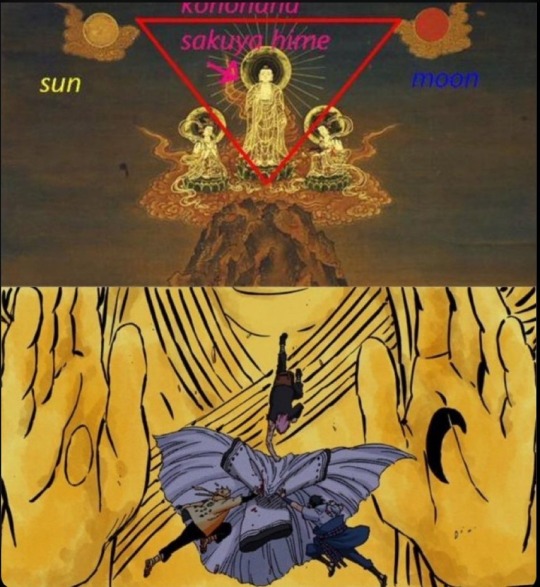
- Sakura and Sasuke's name on the sand (probably written by Sakura, don't know why this is relevant.
- Sasuke with kusanagi (that's okay) and snakes: here the snakes are clearly the focal point. But why? Was Ninigi associated with snakes?
- The cover with Sakura wearing a sakura-flowered dress and while holding the Uchiwa fan.
The last one specifically is... interesting because: where is the deep references? The flowers? That's the girl's name. The fan? It seems more like another sign of Sakura crushing on Sasuke and writing "Sakura Uchiha" on her notebook while giggling.
So, the point is:
If you want to make an analysis you need:
1. real sources (not photos already crafted to prove your ss point) - btw, I gave actual books, but they refused to take them in consideration;
2. to use images consistently.
Here a summarised analysis:
Shinjū is a Japanese term meaning "double suicide". Lovers committing double suicide believed that they would be united again in heaven. It was also possible for lovers to commit a murder-suicide (muri-shinjū).
This is a clear example of Shinjū's reference:

Here, we have:
- the will to die together
- the hope they will meet again in the afterlife
- the "connection of hearts" (from the very term's meaning and the context)
Here the sources:
1. Becker, Buddhist Views of Suicide and Euthanasia, Philosophy East and West
2. Takahashi, Cultural dynamics and the unconscious in suicide in Japan
3. Leupp, Male Colors: The construction of homosexuality in Tokugawa Japan
4. Heldt, Between followers and friends: male homosocial desire in Heian Court Poetry
5. Saikaku Ihara, Love of Comrades
6. Saikaku Ihara, The Great Mirror of male love
7. Rogers, She loves me, she loves me not. Shinju and Shikido Okagami
8. Heine, Tragedy and Salvation in the Floating World
THIS is a sensible reference. And a very small analysis.
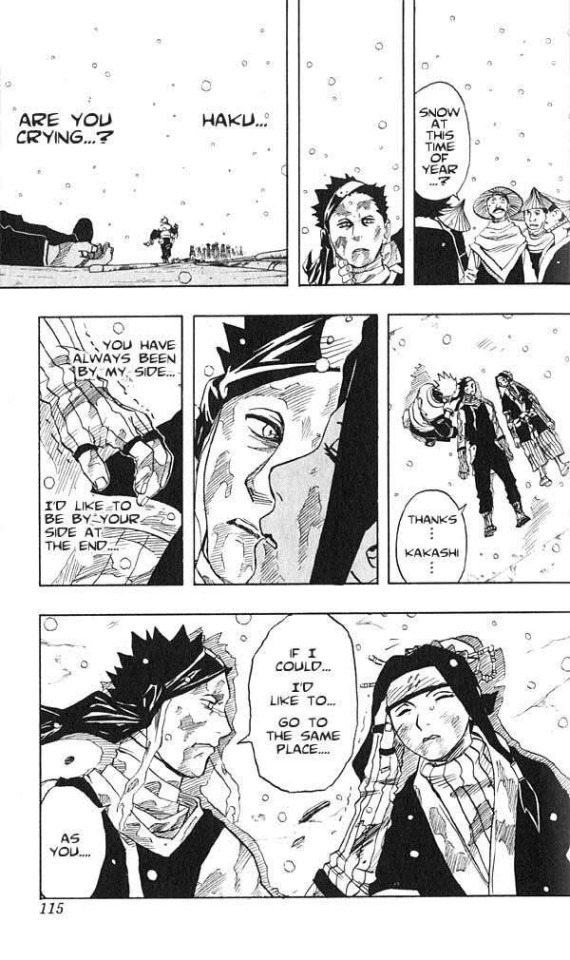
And a parallelism.
Bye :)
PS Tumblr fucked up the pics order (sorryyyy)
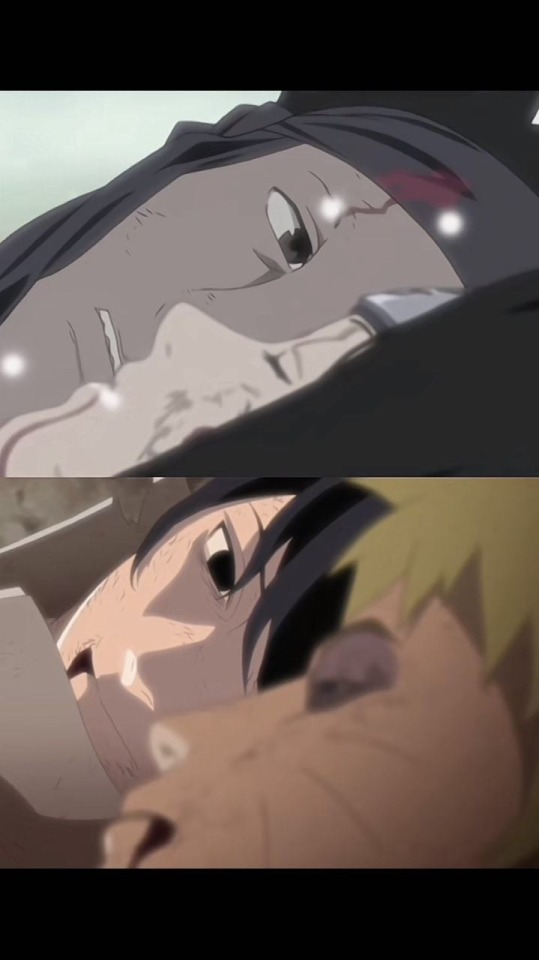
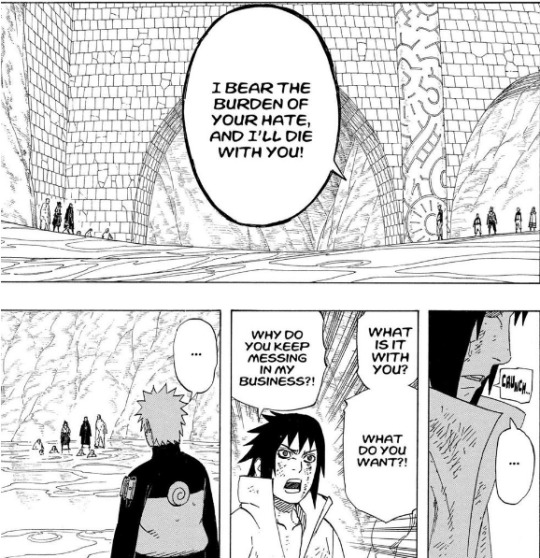


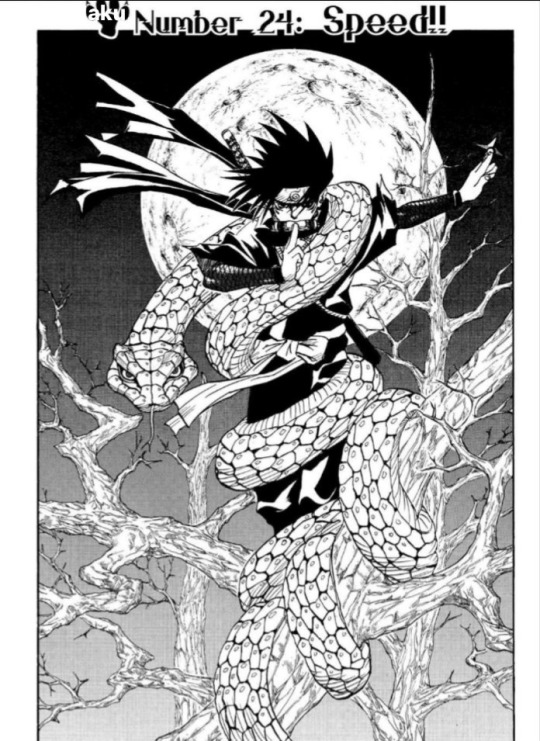
17 notes
·
View notes
Text
Intro to Tantra
Tantra as a subject has always fascinated me, its ability to break orthodoxy, to reform religious and spiritual expression from within all the while maintaining a strong religious identity, whether it be Hindu or Buddhist. This is just a piece I wrote to understand this vast and complex subject and I hope you guys enjoy it as well.
What is tantrism?
Tantra etymologically is a hard to define term. The literal meaning is “loom, weave/ warp” and can also mean essence. However, tantra can be more intuitively defined as any systematic broadly applicable "text, theory, system, method, instrument, technique or practice”. it’s an esoteric occult tradition which is almost always equated with spiritual sex or sex magic in the west. In the eastern tradition, however, it is much more than that. Further, it is a magical tradition that is a part of both Hinduism and Buddhism. In Hinduism, there are both the right hand path (eg: Sri Vidya) and the left hand path of Tantra (eg: Kaula).
The right hand path seeks to keep in line with orthodox principles of Hindu society while the left hand path seeks to break down all the boundaries between purity and impurity which is where the theory of pancha Makara and other such practices comes in (the usage of meat, fish, parched grain, wine and sexual union in ritual), which each represent the 5 elements. They use this rather than the usual representation (I.e flowers, lamp, incense, food, sandalwood paste for each of the elements) because ‘liberation is achieved by the use of that which causes bondage’. In Buddhism, tantric practice is primarily developed as a part of Vajrayana Buddhism which was highly influenced and developed in Tibet from the Shiva tantras. The agamic traditions are also called tantrism, where the agamas mean "that which has come down”. The Agama literature is voluminous, and includes 28 Shaiva Agamas, 64 Shakta Agamas (also called Tantras), and 108 Vaishnava Agamas (also called Pancharatra Samhitas), and numerous Upa-Agamas. These tantras/agamas are also more commonly referred to as the fifth veda by those schools inclined to assimilate it, some schools seek to unite Tantric and Vedic teachings while others do not.
So what is the ultimate goal of Hindu Tantrism?
It’s to unite shiva and Shakthi within oneself and ultimately achieve enlightenment [only in the shaivite and Shakthi traditions], the different schools such as Kashmiri shaivism and shaiva siddhanta (shiva sect) and Sri vidya (shaktha sect) are only defined as such due to their inclination toward one either shiva or Shakthi as their main deity, however, the underlying principle remains the same. The Vaishnava sect (worshippers of vishnu) also have their main tantric doctrine called Pancharatra which is ritually similar to shaiva siddhanta, both of which are orthodox and quite rigid traditions whose rituals are followed in South Indian temples. But the most interesting aspects of Tantra comes from the theory that for the tantric the ultimate goal is Jiva Mukthi (immortality in the body) and it is not to be achieved through an ascetic life but rather there are 4 goals in life: Artha (wealth), Kama (sensual pleasure), dharma (righteous duty) and moksha (enlightenment/liberation). And so there must be a balance between worldly life and spiritual life. Further, tantrics believe that the ultimate non duality is when there is nothing that can be stated as moral or immoral and some go to extreme sadhanas (spiritual practices) in order to remove the shackles of duality. To them then everything in the world is sacred, almost like an antithesis to atheism and as a reaction to the orthodox religious traditions, hierarchy and “purity” described in them.
The philosophy of immortality itself is actually incredibly interesting. Because it is believed that after death the soul reincarnates and has to go through this cycle of living etc again and with the added belief that the soul and the divine is ultimately one, it is viewed that the best way to achieve true enlightenment is by extending one’s life (immortality, jiva mukthi). The process to achieve immortality is further described in detail with most of the tantric doctrines agreeing on the fundamental principles to achieve it. In that regard, from the perspective of a tantric, the texts describe an almost scientific manner to achieving the goals of mysticism/magic with a myriad of tools, doctrines and symbolisms used within each of the schools to achieve the ultimate goal. Achieving immortality when one is alive, however, is not in contrast in contrast to the ultimate aim of other dharmic traditions which is to achieve moksha (liberation [after death]), it is instead the ultimate form of liberation according to tantric doctrine.
Yoga Vs Tantra
While yoga can be classified as mystical tradition, Tantra can be seen as a magical tradition. The differences between the two can be summarised as, “mysticism is the art of giving and magic is the art of getting”. You could say that the two philosophies are linked through the practice of Kundalini yoga. Just like yoga there are some commonalities between all the tantric schools and tantric philosophy more generally. The seven common characteristics (although there could be more) are:
it’s an esoteric tradition because it is deemed to be dangerous and contains transgressive practices and so entry into practice requires initiation and the traditions themselves use highly metaphorical imagery
You need a teacher (guru), who is the one who initiates the disciple [personal opinion: especially with fake gurus being a rampant phenomena It’s my personal philosophy which echoes Shaiva siddhanta “shiva is the sat guru (the teacher of all/the eternal teacher)”]
The use of yantras (geometrical figures)
The use of mantras (chants)
Revaluation of the body as a positive being embodied with subtle energies (kundalini yoga and chakras)
Problematic mental states viewed positively and used in order to achieve the divine
Deity identification and unity with the deity
These seven characteristics are common to both Hindu and Buddhist tantric traditions. Now, there are obviously quite a lot of differences in worship even within each subdivision of each philosophy and more generally between philosophies and I haven’t really touched upon Buddhist Tantrism but this sort of gives a basic introduction to the vast rabbit hole that is tantra.
110 notes
·
View notes
Text
QUEER HISTORY, BOTANICAL LANGUAGE
The motivations of the garden and the flowers featured in it is motivated by queer histories and language defined by the influence of botanics.
The history of botanical language being used as signifiers in queer culture as well as derogatory terms towards the queer community has been interlinked for hundreds of years.
In my list of intended flowers, I aim to use violets, pansies, lavender, and green carnations.
Violets are related to Sappho and her poetry, what is considered the first known example of lesbian literature written in Ancient Greece between 600 and 500 BC. While Sappho was a Lesbian in the sense that she was from Lesbos, samples of her poetry speak of love and acts of pleasure between women.
A Pansy is a term still occasionally used as a mild derogatory term for a gay man, originating in the 1920's. While originally being an opportunity for queer representation on the stage and in early film during the "Pansy Craze" of the time, it eventually evolved into the negative connotation that it is today, alongside the word "fairy".
The use of Lavender has both positive and negative histories. In the positive, Lavender has been used as an identifying term for someone who is queer, while also can be seen being used interchangeably with "rainbow", another term referring to the wider LGBT+ community. However, much more notably and especially in my work, Lavender refers to the Lavender Scare of the 1960's, in the cold war climate of the United States where masses of candidates and employees in governmental positions were dismissed for fears of homosexuality.
Green Carnations were used by Oscar Wilde and his friends, worn on the lapel and later becoming wider spread as a way to indicate you were a gay man.
With other terms such as an "evening botanist" or "horticultural lad" have been used to describe homosexuals, there is a rich history between botanical language and the history of queer identity.
2 notes
·
View notes
Text
Groups of writers, artists, and thinkers who share common interests, ideas, and values, and who come together to discuss and promote their work.
These groups often emerge during periods of cultural and social change and are characterized by their innovative and unconventional approach to art and ideas.
The Algonquin Round Table was a group of witty writers and critics who gathered for lunch at the Algonquin Hotel in New York City. They were known for their sharp wit, humor, and wordplay. The members included Dorothy Parker, Alexander Woollcott, and George S. Kaufman.
"Gertrude Stein's salon" or simply the "Stein salon" was a gathering place for writers, artists, and intellectuals in Paris during the early 20th century. Stein and her partner, Alice B. Toklas, hosted weekly gatherings in their apartment which became a center for avant-garde culture and a meeting place for artists such as Pablo Picasso, Henri Matisse, and Georges Braque, as well as writers such as Ernest Hemingway, F. Scott Fitzgerald, and T.S. Eliot.
The Bloomsbury Group - a group of writers, artists, and intellectuals who lived in the Bloomsbury area of London in the early 20th century. Members included Virginia Woolf, E.M. Forster, and John Maynard Keynes.
The Harlem Renaissance - a cultural movement that emerged in Harlem, New York City, in the 1920s and 1930s. It was characterized by a flowering of African American art, literature, and music, and included artists such as Langston Hughes, Zora Neale Hurston, and Duke Ellington.
The Surrealists - a group of artists and writers who were associated with the Surrealist movement, which began in France in the 1920s. Members included Salvador Dali, Andre Breton, and Max Ernst.
The Inklings - a literary discussion group associated with Oxford University in the 1930s and 1940s. Members included J.R.R. Tolkien, C.S. Lewis, and Charles Williams.
The Black Mountain poets - a group of poets associated with Black Mountain College in North Carolina in the 1940s and 1950s. Members included Robert Creeley, Charles Olson, and Denise Levertov.
The Beat Generation - a group of writers and poets who emerged in the United States in the 1950s. Members included Jack Kerouac, Allen Ginsberg, and William S. Burroughs.
The Factory was Andy Warhol's studio and creative hub in New York City during the 1960s and 1970s. A gathering place for a diverse group of artists, musicians, and other creatives. Notable figures associated with the Factory include musicians Debbie Harry and Lou Reed, artists like Jean-Michel Basquiat and Keith Haring, photographer Robert Mapplethorpe, and author Truman Capote.
6 notes
·
View notes
Text
jak and anne.
i will be posting the description of each one of my ocs and the guys that i write for.
this post is dedicated to jak and anne and will be linked at the beginning of the one shots that are based around them.
----------------------------------------------------
name: anne johnson
nick name: annie, ed sheeran
birth date: april 16th, 2005
place of birth: heraklion, greece
strengths: gardening
weakness: flowers
song: strawberry blond - mitski
“honestly, get help” - anne johnson
“anne shirley johnson hated her name. not because it was a basic name -even though it was- but because everyone else seemed to find it cool, or funny. her father always said that anne of green gables was her mother’s favorite book, so when she saw fiery red hair she just had to name her that. it didn't help that she was passionate about literature and flowers, which made her look like she was trying to be like the character. her family had moved to italy when her mom passed away, her dad quickly finding a caterer job that made enough money to keep them there, and that's how she met jak. he was desperate and she was pretty and looked nice enough, so what could go wrong?”
~~~~~~~~~~~~~~~~~~~~~~~~~~~~~~~~~~~~~~~~~~~~~~~~
name: jak crawford
nick name: jakie, brillo head
birth date: may 2nd, 2005.
place of birth: north carolina, united states
strengths: smart mf
weakness: redheads
song: night changes - one direction
“i’ll be your gilbert” - jak crawford
“jak crawford was lost. it was a weird feeling, he had never been lost before. now that all of his friends were getting their teenage romances, he really felt like it. he didn't have that person that he thought of at night before sleeping, or that the simple say of their names brought a smile to his face, and he didn't understand why. ollie said that maybe he was too shy, that he needed to get out there and meet new people, and maybe he was right. he never thought he could be as desperate as to fake a relationship, but seeing the younger kids get girlfriends before him? that was his breaking point. so when his brown eyes found her blue ones in the crowd, he knew he had to at least try. he did always have a thing for redheads anyways”
-----------------------------------------
authors note:
fake dating trope with jak, im excited for this one.
and yes, i re read anne of green gables recently and yes that is why.
#jak crawford#prema racing#Prema#premaoneshots#f3#f3 oneshots#pxperplxnets#anne johnson#jak crawford one shots#jak crawford x oc#jak x anne
16 notes
·
View notes
Text
@magnificentmuses
I’m too tired to think of a ship so idk friend. This is me giving you free reign to do whatcha want when it comes to kids for our ships
SHION/SATORI IT IS
Now this time we'll be meeting Komeiji Honey. Shion and her sister Joon are both named after invasive species of flowers in Japan. So I thought I'd go with something similar here. The Japanese Honeysuckle, or Lonicera Japonica, is a shrub-flower from Japan that has spread across the pacific to pacific islands, South America, and the United States. I choose to go with a plant that is invasive from Japan instead of to Japan to have a difference between her generation and her mother's in the naming scheme.
Her ability is the ability to predict the misfortunes of others. Think of Honey like a Psychic. She can give you prediction about your future, and they will come true, but she's only capable of predicting the bad and horrible things that will happen in your life.
For a face claim I like Sozonaki Noriko from Kiznaiver. I happen to think that she's got a very fun looking design in general and that the professional look of her outfit gives her a regal look as a princess of the palace of the earth spirits.



My take is that what she is, is kind of like Sanae. Sanae is a human but also is capable of gathering faith as a living god. Honey is similar, a Satori that could also gather faith as a living god. Though given her godhood would be that of a God of Misfortune/poverty, I really doubt anyone would dedicate their faith towards her.
She cares deeply for both of her mothers but spends a large portion of her time caring for Shion. After all Shion's natural misfortune very regularly impairs her life, so the least that Honey can do is predict when bad things will befall her mother and be there afterwards to assist her. She does NOT, however, make any attempt to prevent them from happening. As Honey does not believe that fate can be changed.
Wanting to make her mothers and Aunt Joon proud, Honey studies economics. Satori's large collection of books, though mostly novels, contains some literature on academic concepts such as the functions of economy and business. Which Honey devours in an attempt to earn the funds to take care of both Shion and Joon. Though given that (again) they're poverty gods, that money is gone just as quickly as she earned it.
Someday she may make an effective treasurer or minister of finance for The Underground but that day is still long into the future. When the new generation rules over the Underground.
5 notes
·
View notes
Text
Wedding
A wedding is a ceremony where two people are united in marriage. Wedding traditions and customs vary greatly between cultures, ethnic groups, religions, countries, and social classes. Most wedding ceremonies involve an exchange of marriage vows by a couple, presentation of a gift (offering, rings, symbolic item, flowers, money, dress), and a public proclamation of marriage by an authority figure or celebrant. Special wedding garments are often worn, and the ceremony is sometimes followed by a wedding reception. Music, poetry, prayers, or readings from religious texts or literature are also commonly incorporated into the ceremony, as well as superstitious customs.
Some cultures have adopted the traditional Western custom of the white wedding, in which a bride wears a white wedding dress and veil. This tradition was popularized through the marriage of Queen Victoria. Some say Victoria’s choice of a white gown may have simply been a sign of extravagance, but may have also been influenced by the values she held which emphasized sexual purity.
The use of a wedding ring has long been part of religious weddings in Europe and America, but the origin of the tradition is unclear. One possibility is the Roman belief in the Vena amoris, which was believed to be a blood vessel that ran from the fourth finger (ring finger) directly to the heart. Thus, when a couple wore rings on this finger, their hearts were connected. Historian Vicki Howard points out that the belief in the “ancient” quality of the practice is most likely a modern invention. In the United States of America, a groom’s wedding band has not appeared until the early 20th century, while in Europe it has been part of the tradition since the ancient Romans, as witnessed by the jurist Gaius.
The exit from the wedding ceremony is also called the “send off”, and often includes traditional practices, such as the newlyweds and the wedding party bowing and kissing the knees of the elders in Ethiopian weddings. The send off often includes throwing rice (a symbol of prosperity and fertility) or other seeds at the newlyweds in most of the Western world, as well as for example India and Malaysia. Despite fears of the opposite, the use of uncooked rice for this purpose is not harmful to birds. Shoe tossing in place of rice has also been used in several cultures.
Wedding decorations at the Mahnala Stage (Mahnalan lava) in Hämeenkyrö, Pirkanmaa, Finland in July 2019
The wedding ceremony is often followed by wedding reception or a wedding breakfast, in which the rituals may include speeches from a groom, best man, father of a bride and possibly a bride, the newlyweds’ first dance as a couple, and the cutting of an elegant wedding cake. In recent years traditions have changed to include a father-daughter dance for a bride and her father, and sometimes also a mother-son dance for a groom and his mother.
2 notes
·
View notes
Text
Mamoru Kyokuhara
1st of all, this character idea is completely thanks to @pjsekaioc on tiktok, so check her out!
Mamoru is a 21 year-old university student majoring in literature and music, he's in a unit called 'Silent Aria', he's know as Aster online
He has long purplish white hair with soft purple eyes, very androgynous looking, pretty boy hot girl kinda
Mamoru Kyokuhara is Kanade Yoisaki's cousin, both of them were super close to the point that they were basically siblings, even after Kanade's mom died
Fast forward to when Mamoru is 15, his parents died on impact in a car accident, Mamoru blames himself because they were going to his piano recital, and due to this he believed that he was a horrible person and thanks to that started to distant himself from anything music related like the Yoisaki due to the negative connotation
Mamoru started living by himself and picked up a job as a freelance writer, his rich grandparents help him by sending him money for basic needs, when Mr Yoisaki found out that his nephew was living like that, he immediately reached out to him so he could live with them, because of his close relationship with Kanade, Mamoru being the idiot he is declined
When Mamoru is 17, Mr Yoisaki got hospitalised and Mamoru blames himself for Kanade isolating herself and he started sending her money through her grandmother, meanwhile, a group of teens around his age moved to the apaetment next door because of school reasons, due to just how presistant all of them were, Mamoru befriends them, they discover his musical talent and slowly encourage him to start music again, and soon he started composing and singing songs under the name 'Aster', like his favourite flower
Overtime, he starts taking care of himself, like eating more healthy foods and keeping his house clean, and since his mental state is good enough, he starts considering taking in Kanade or at least start talking
Wanna know more? Sorry, haven't really started writing him but here you go!
0 notes
Text
I was tagged by the always lovely @eybefioro to fill this out. Thank you for the tag <3
Were you named after anyone? No. My dad named me after his favorite flower.
When was the last time you cried? Too long, if I'm honest 😅 it's been a few months
Do you have kids? Nope and I never will
What sports do you play/have played? I've never been a sports person. I enjoy solitude, so my activities include hiking.
Do you use sarcasm? All the time. I grew up in a family that used sarcasm constantly.
What's the first thing you notice about people? Uh height probably?
What's your eye color? Blue/grey
Scary movies or happy endings? Happy endings usually. I don't mind scary movies but I need happy endings.
Any talents? Um I'm great at adapting to new situations?
Where were you born? Midwest United States
What are your hobbies? I've been learning about identifying and foraging local plants - there's nothing better than picking berries to enjoy while hiking. I paint/sketch occasionally, and I write
Do you have any pets? 2 cats and 2 dogs
How tall are you? 5'8"
Favorite subject in school? Literature and art
Dream job? The only dream job I've ever really thought about is being an author. It's highly unlikely to happen - I don't have any fancy degrees or enough focus for long projects.
Tagging anyone who sees this and wants to fill it out <3
0 notes
Text
50 Gk questions with answers in english
50 General Knowledge Questions with Answers in English:
Geography and History:
Which continent is the smallest by landmass? (Answer: Australia)
In which year did the Berlin Wall fall? (Answer: 1989)
What is the highest mountain in the world? (Answer: Mount Everest)
Which city hosted the first ever Olympic Games in the modern era? (Answer: Athens)
What is the largest desert in the world? (Answer: Sahara Desert)
Who painted the Mona Lisa? (Answer: Leonardo da Vinci)
Which river flows through the Grand Canyon? (Answer: Colorado River)
Which country is the most populous in the world? (Answer: China)
When was the United Nations founded? (Answer: 1945)
What is the capital of Canada? (Answer: Ottawa)
Science and Technology:
What element makes up the majority of the Earth's atmosphere? (Answer: Nitrogen)
Who invented the light bulb? (Answer: Thomas Edison)
What is the largest planet in our solar system? (Answer: Jupiter)
What is the process by which plants convert sunlight into energy? (Answer: Photosynthesis)
What is the scientific name for the common cold? (Answer: Rhinitis)
What is the largest living organism on Earth? (Answer: Honey fungus)
What is the fastest man-made object ever launched? (Answer: Voyager 1)
What is the process by which computers store data? (Answer: Digital storage)
What is the chemical symbol for water? (Answer: H2O)
What is the largest mammal on Earth? (Answer: Blue whale)
Current Affairs and Culture:
Who is the current Secretary-General of the United Nations? (Answer: António Guterres)
What is the most popular social media platform in the world? (Answer: Facebook)
What is the currency of Japan? (Answer: Japanese yen)
Which country won the most recent FIFA World Cup? (Answer: Argentina, 2022)
What is the capital of Australia? (Answer: Canberra)
Who is the current president of the United States? (Answer: Joe Biden)
What is the largest country in the world by landmass? (Answer: Russia)
What is the most spoken language in the world? (Answer: Mandarin Chinese)
What is the name of the current COVID-19 pandemic variant of concern? (Answer: XBB.1.5)
What is the world's tallest building? (Answer: Burj Khalifa)
Literature and Art:
Who wrote the novel "Hamlet"? (Answer: William Shakespeare)
What is the name of the famous painting by Vincent van Gogh featuring a starry night? (Answer: The Starry Night)
Which composer wrote the opera "Carmen"? (Answer: Georges Bizet)
What is the national flower of India? (Answer: Lotus)
Which language is the oldest known language in the world? (Answer: Sumerian)
Who is the author of the book "To Kill a Mockingbird"? (Answer: Harper Lee)
What is the name of the famous sculpture in Rio de Janeiro, Brazil? (Answer: Christ the Redeemer)
Who painted the Mona Lisa? (Answer: Leonardo da Vinci)
What is the national sport of Canada? (Answer: Ice hockey)
Which artist painted the "Guernica" anti-war masterpiece? (Answer: Pablo Picasso)
Bonus Questions:
What is the name of the world's longest river? (Answer: Nile River)
What is the chemical symbol for gold? (Answer: Au)
What is the capital of France? (Answer: Paris)
What is the smallest country in the world by landmass? (Answer: Vatican City)
What is the name of the world's largest ocean? (Answer: Pacific Ocean)
What is the name of the world's most popular video game? (Answer: Minecraft)
What is the name of the current Pope of the Catholic Church? (Answer: Pope Francis)
What is the capital of Germany? (Answer: Berlin)
Latest General Knowledge Questions with Answers
Interesting general knowledge Questions with Answers
Random General knowledge Questions with Answers
Common general knowledge questions and answers for students,
0 notes
Text
HISTORY OF FEMINISM
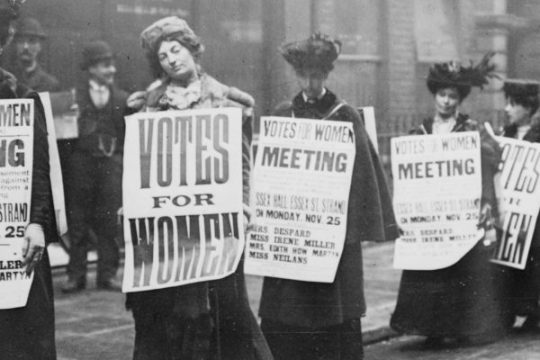
Charles Fourier, a utopian socialist and French philosopher, is credited with having coined the word "féminisme" in 1837. The words "féminisme" ("feminism") and "féministe" ("feminist") first appeared in France and the Netherlands in 1872, Great Britain in the 1890s, and the United States in 1910.
With a primary claim of equality, Renaissance defenses of women can be found throughout Europe and in a wide range of literary genres. The tenets that feminists invoked eventually led to discussions about economic property inequality. Women at this time used literature to construct non-hierarchical, interconnected institutions that offered chances to both men and women, a process known as "feminizing society." In the eighteenth century The Age of Enlightenment was characterized by secular intellectual reasoning and a flowering of philosophical writing. ] The Declaration of the Rights of Woman and of the Female Citizen was written and published in 1791 by Olympe de Gouges in collaboration with the Society of the Friends of Truth, in response to de Condorcet's persistent but unsuccessful pleas to the National Assembly in 1789 and 1790. This was yet another appeal to the authorities of the French Revolution to acknowledge women's natural and political rights.De Gouges virtually mimicked the inability of males to include more than half of the French population in egalité when he penned the Declaration in the language of the Declaration of the Rights of Man and of the Citizen. Although the Declaration's objectives were not immediately met, it did establish a standard for how feminists might debate. The women's suffrage campaign is the most deeply embedded campaign of the past 250 years.However suffrage was gained after much hard work by the feminists , their work much more difficult because of the women who did not support their campaigns and who were blissfully oblivious of the injustice
0 notes
Text
The Cornflower: Germany's National Flower and Its Significance
The cornflower (Centaurea cyanus) is a beautiful and hardy annual flower that is native to Europe and Asia. It is also known as the bachelor's button or the bluebottle. The cornflower is the national flower of Germany, and it has been a symbol of the country for centuries.
The cornflower is typically a deep blue color, but it can also be found in shades of white, pink, and purple. The flowers are borne on long stems, and they can grow up to three feet tall. Cornflowers are often found growing in fields and meadows, but they can also be cultivated in gardens.
The cornflower has a long and rich history in Germany. The flower was first mentioned in German literature in the 12th century, and it has been used in German folklore and fairy tales for centuries. The cornflower became a popular symbol of German nationalism in the 19th century, and it was used on the uniforms of the Prussian Army.
Today, the cornflower is still a popular symbol of Germany. It is used on the official coat of arms of the German Federal Republic, and it is also used on the uniforms of the German military. The cornflower is also used in many different commercial products, and it is a popular souvenir for visitors to Germany Country Flower.
Significance of the cornflower
The cornflower is a symbol of many different things in German culture. It is often associated with qualities such as loyalty, love, and purity. The cornflower is also a symbol of hope and resilience. The flower blooms in the summer, after the long winter months. This makes it a symbol of new beginnings and the promise of better days to come.
The cornflower is also a symbol of German unity and diversity. The flower is native to all ten German states, and it is found in all parts of the country. The cornflower is a reminder that even though Germany is a diverse country, its people are united by their shared values and culture.
Conclusion
The cornflower is a beautiful and significant flower to the German people. It is a symbol of the country's rich history, its resilience, and its bright future. The cornflower is a reminder of what makes Germany a special place, and it is a source of pride for all Germans.
0 notes
